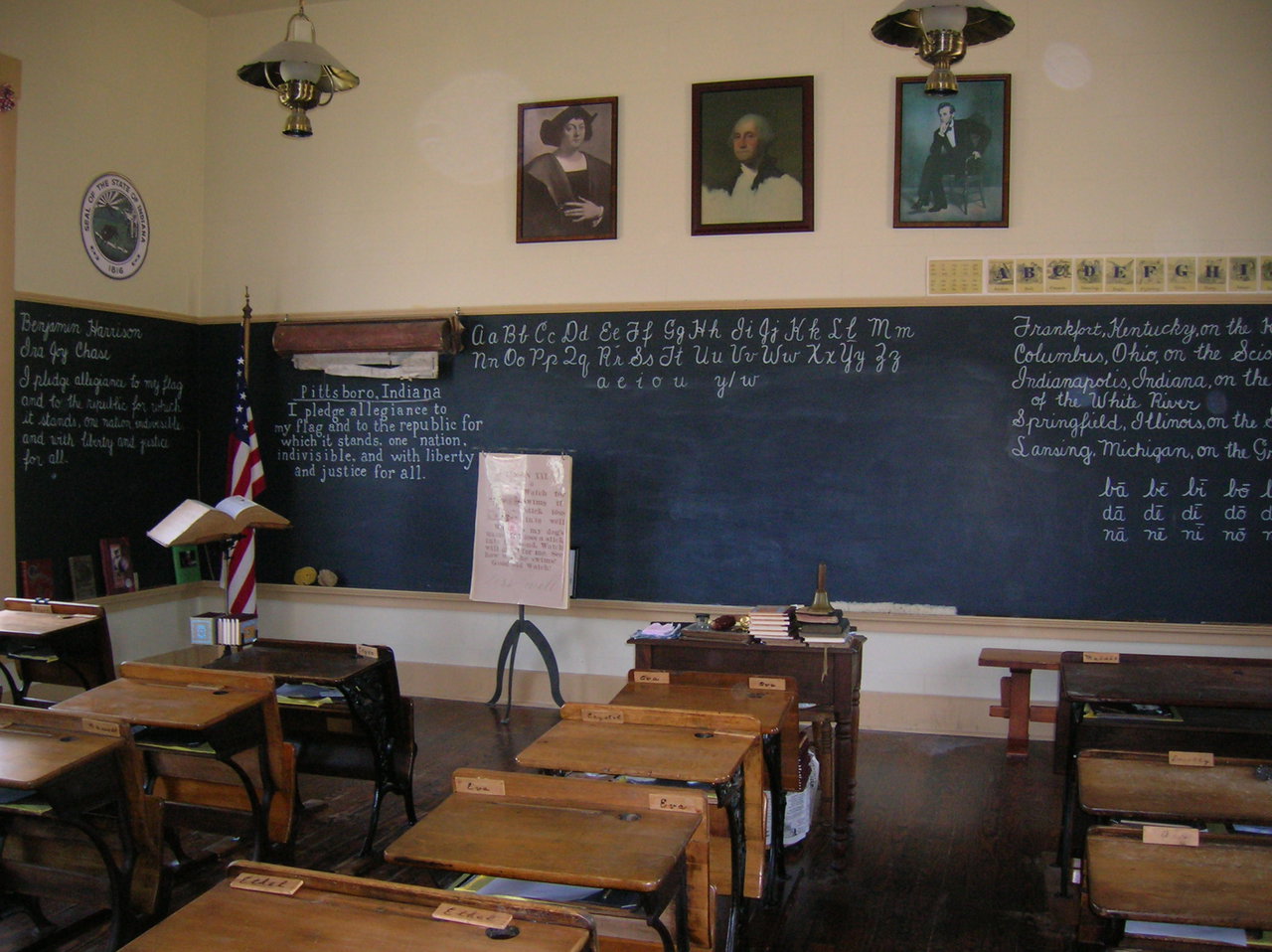People have different ideas when they hear terms such as traditional one-room schools and conventional education. Most government-run and large Christian schools can be classified as conventional education, while A.C.E. is a system that truly follows traditional education methods.
A.C.E.’s traditional, nonconventional approach may seem odd to modern educators, but it possesses a sound educational basis. The methodology behind A.C.E.’s curriculum not only follows the traditional path but also embraces traditional values and Biblical principles that conflict with secular education.
Some people have suggested that A.C.E.’s academic approach most closely resembles the one-room schoolhouses of the 1800s and early 1900s.
These early schools were embedded in each community, both large and small. Scattered across the landscape, one-room schoolhouses were only centralized in the sense that they were close to the students they served. As schools consolidated into graded classrooms, all was based on administrative convenience rather than individualization of students. The control of the schools shifted from the parents in these local communities to school boards in large, centralized districts. While prayer and Scripture were once observed in schools, they have been sacrificed under the rally cry of “separation of church and state”.
One-room schoolhouses of the past taught children how to read so that they could understand God’s Word. This ideology mirrors the concepts found in the first nine verses of Deuteronomy 6:
· Fear the Lord.
· Keep His commandments.
· Hear God’s law.
· Observe God’s law.
· Love God.
· Hide God’s Word in your heart.
· Teach your children diligently.
· Constantly dwell on God’s commandments.
· Keep the commandments evident for all to see.
As government schools have moved away from Biblical teachings, A.C.E. assists schools in facilitating the Biblical command to train up children in the nurture and admonition of the Lord. In many various ways, A.C.E. incorporates Scripture and character training throughout the program. In a world that lacks character, the PACEs instill 90 of the character traits of Christ into students.
In the Learning Center – the modern version of a one-room schoolhouse – there are clearly-defined procedures. Few other programs incorporate the educational essentials provided by the Five Laws of Learning. By following the A.C.E. program, students are placed at an appropriate level of learning, shown how to set and meet appropriate goals, given motivation and control, and have their learning measured and rewarded. Through the structure of the Learning Center and its procedures, students learn to prepare for a lifetime of service for the Saviour in a world that increasingly has rejected the Bible.
Deuteronomy 6:1-9, “Now these are the commandments, the statutes, and the judgments, which the Lord your God commanded to teach you, that ye might do them in the land whither ye go to possess it: That thou mightest fear the Lord thy God, to keep all his statutes and his commandments, which I command thee, thou, and thy son, and thy son’s son, all the days of thy life; and that thy days may be prolonged. Hear therefore, O Israel, and observe to do it; that it may be well with thee, and that ye may increase mightily, as the Lord God of thy fathers hath promised thee, in the land that floweth with milk and honey. Hear, O Israel: The Lord our God is one Lord: And thou shalt love the Lord thy God with all thine heart, and with all thy soul, and with all thy might. And these words, which I command thee this day, shall be in thine heart: And thou shalt teach them diligently unto thy children, and shalt talk of them when thou sittest in thine house, and when thou walkest by the way, and when thou liest down, and when thou risest up. And thou shalt bind them for a sign upon thine hand, and they shall be as frontlets between thine eyes. And thou shalt write them upon the posts of thy house, and on thy gates.”


